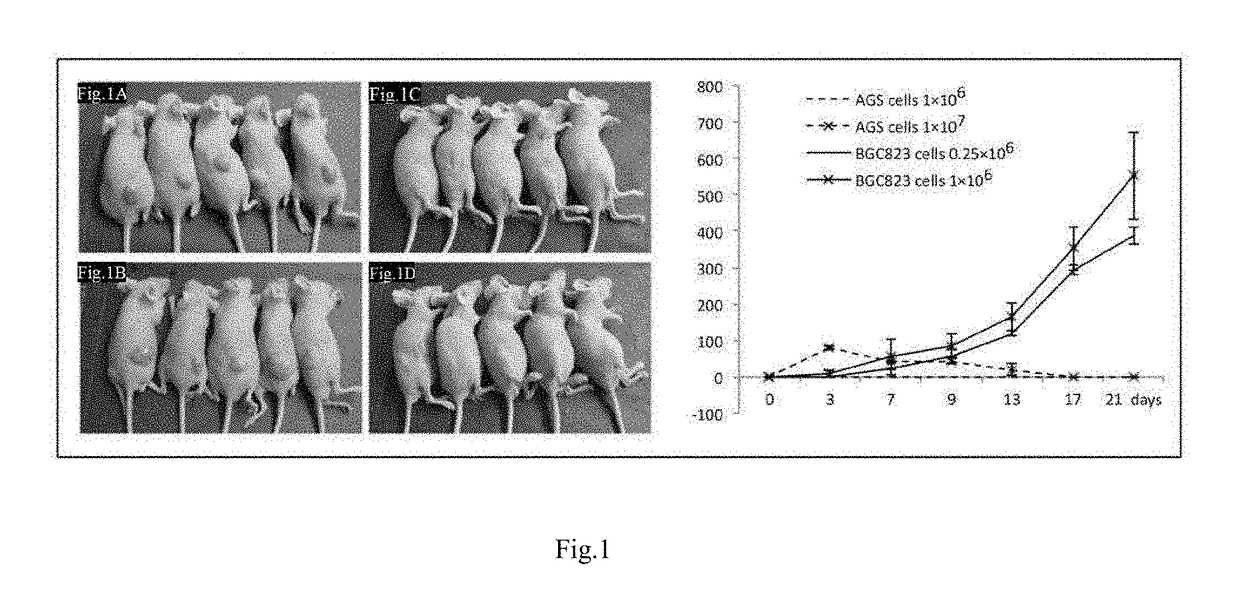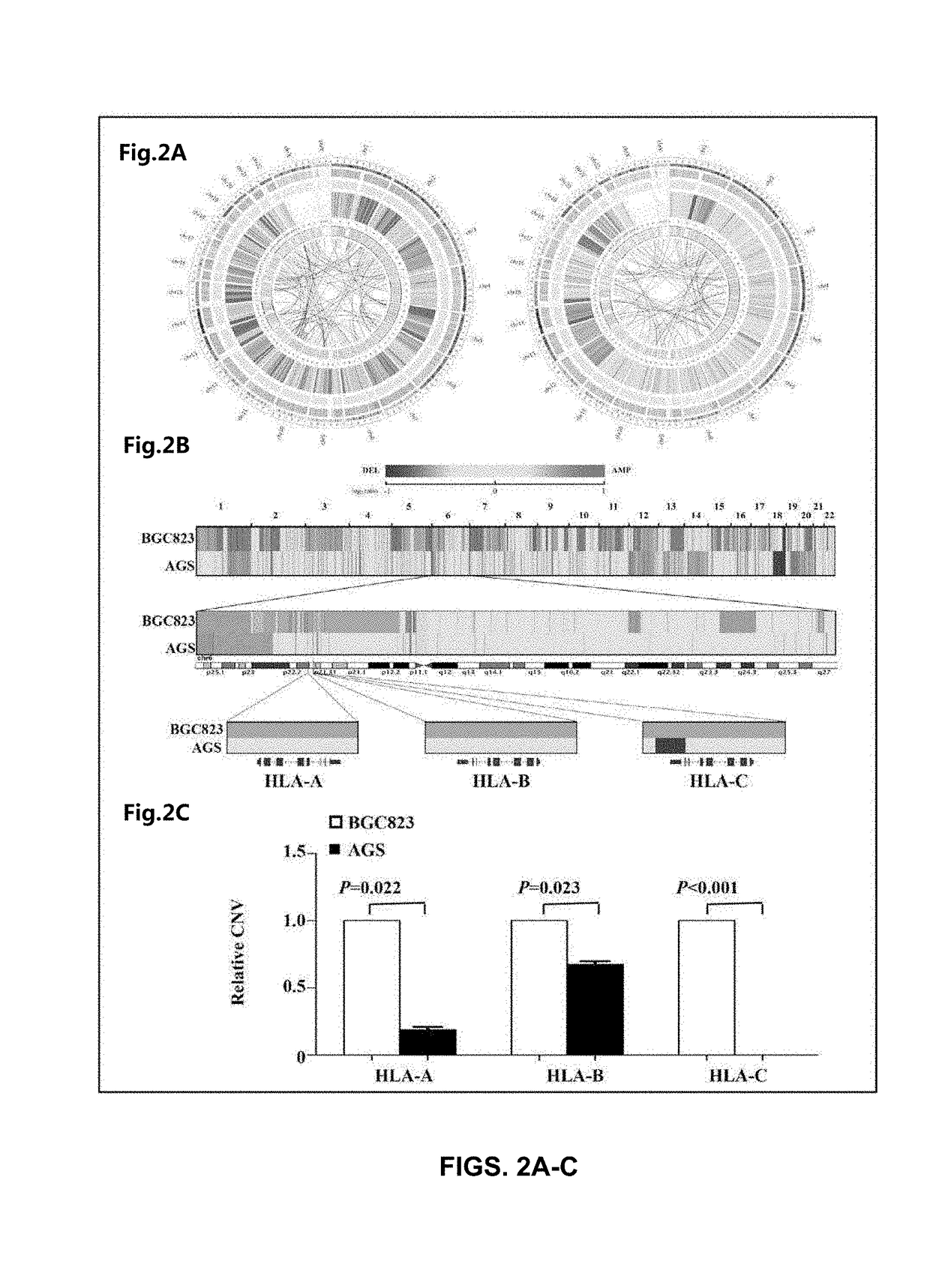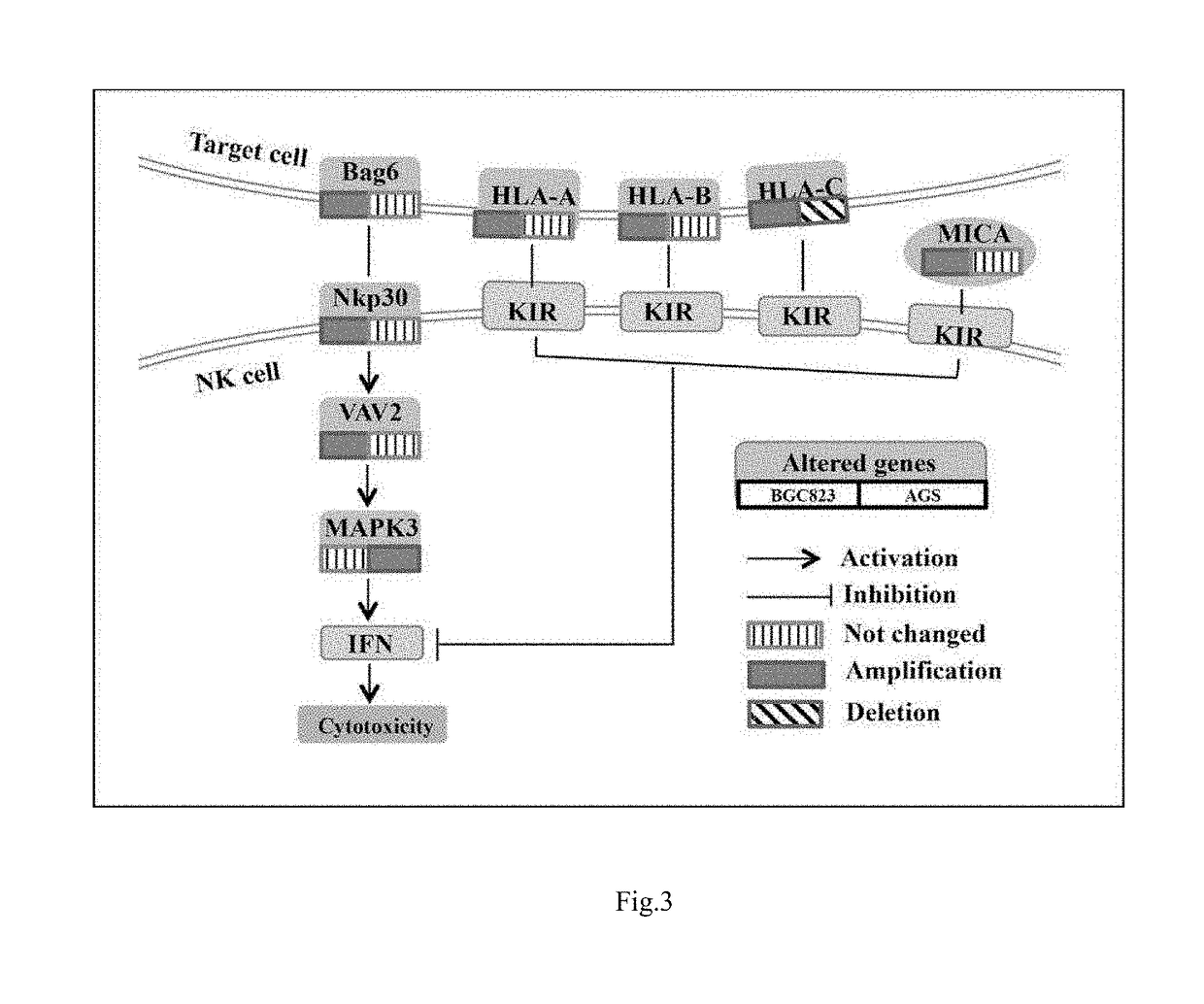Methods and compositions for the diagnosis and treatment of cancer
a cancer and composition technology, applied in the direction of immunoglobulins, instruments, peptides, etc., can solve the problems of high disease mortality, auto-immune symptoms, tumor cells often escape from immune cell lysis, etc., and achieve the effect of reducing the tumor growth ra
- Summary
- Abstract
- Description
- Claims
- Application Information
AI Technical Summary
Benefits of technology
Problems solved by technology
Method used
Image
Examples
example 1
mation in Nude Mice
[0072]In order to examine the relationship between tumor cell line tumorigenicity in nude mice and NK cell activity, and to study the mechanism by which tumor cells evade NK cytotoxicity, selection of tumor cell lines with high tumorigenicity and non-tumorigenicity in nude mice was a necessary approach. We evaluated the tumorigenicity of tumor cell lines by subcutaneous injection of different numbers of cells of the cell lines. As shown in FIG. 1 and Table 1, cell line BGC823 proved to be highly tumorigenic in that 100% tumor incidence was observed on Day 11 when the injected cell number was 2.5×105; AGS cells, on the other hand, failed to form a tumor mass in 120 days after injection with injected cell numbers up to 1×107. Accordingly, we chose the highly tumorigenic BGC823 cell line and the non-tumorigenic AGS cell line as objects of study.
[0073]
TABLE 1Tumor formation of BGC823 and AGS cells in nude miceinjectedCell numberCell line0.25 × 1060.3 × 1060.5 × 1061 ×...
example 2
of CNV Between BGC823 and AGS and Identification of NK Cytotoxicity-Related Genes
[0074]Previous studies have shown that gene mutations and chromosome anomalies are key events in tumor pathogenesis. Many studies showed that variations in gene copy number were more constant than gene mutations in the onset and development of cancer. Thus we examined the copy number variations between the two cell lines by whole genome sequencing. FIG. 2A showed great disparity between copy numbers of the two cell lines: BGC823 was triploid while AGS was diploid. NK cells are known to target cells with no or low expressions of HLA class I molecules (mainly HLA-A, HLA-B and HLA-C), hence we specifically analyzed the HLA class I region on Chromosome 6 of the two cell lines. As shown in FIG. 2B, there was evident amplification of the region in the BGC823 genome, while deletion of HLA-C was observed in AGS. This result was confirmed by real-time PCR (FIG. 2C) which revealed significantly higher expression ...
example 3
on of Protein Expression of the NK Cytotoxicity-Related Genes with CNV
[0076]As proteins are the ultimate executors of gene functions, we examined the levels of the protein products of the above mentioned cytotoxicity-related genes that with CNV, and established their subcellular localizations by immunofluorescence. As shown in FIG. 4A, the protein expressions of HLA class I molecules were evidently higher in BGC823 than in AGS cells, which is consistent with the copy number data. The fluorescence signals revealed membrane distribution patterns of HLA-A and HLA-B in BGC823 cells but only weak expression of these proteins in AGS cells (FIG. 4C). Upon stimulation from nude mice NK cells, HLA-C molecules in BGC823 cells translocated from cytoplasm to cell membrane, while in AGS cells, no such molecule was detected before and after NK stimulation, and AGS cells displayed apoptotic morphology after NK contact, suggesting active NK cytotoxicity against these AGS cells (FIG. 4D).
[0077]In ac...
PUM
| Property | Measurement | Unit |
|---|---|---|
| pH | aaaaa | aaaaa |
| time | aaaaa | aaaaa |
| time- | aaaaa | aaaaa |
Abstract
Description
Claims
Application Information
 Login to View More
Login to View More - R&D
- Intellectual Property
- Life Sciences
- Materials
- Tech Scout
- Unparalleled Data Quality
- Higher Quality Content
- 60% Fewer Hallucinations
Browse by: Latest US Patents, China's latest patents, Technical Efficacy Thesaurus, Application Domain, Technology Topic, Popular Technical Reports.
© 2025 PatSnap. All rights reserved.Legal|Privacy policy|Modern Slavery Act Transparency Statement|Sitemap|About US| Contact US: help@patsnap.com



